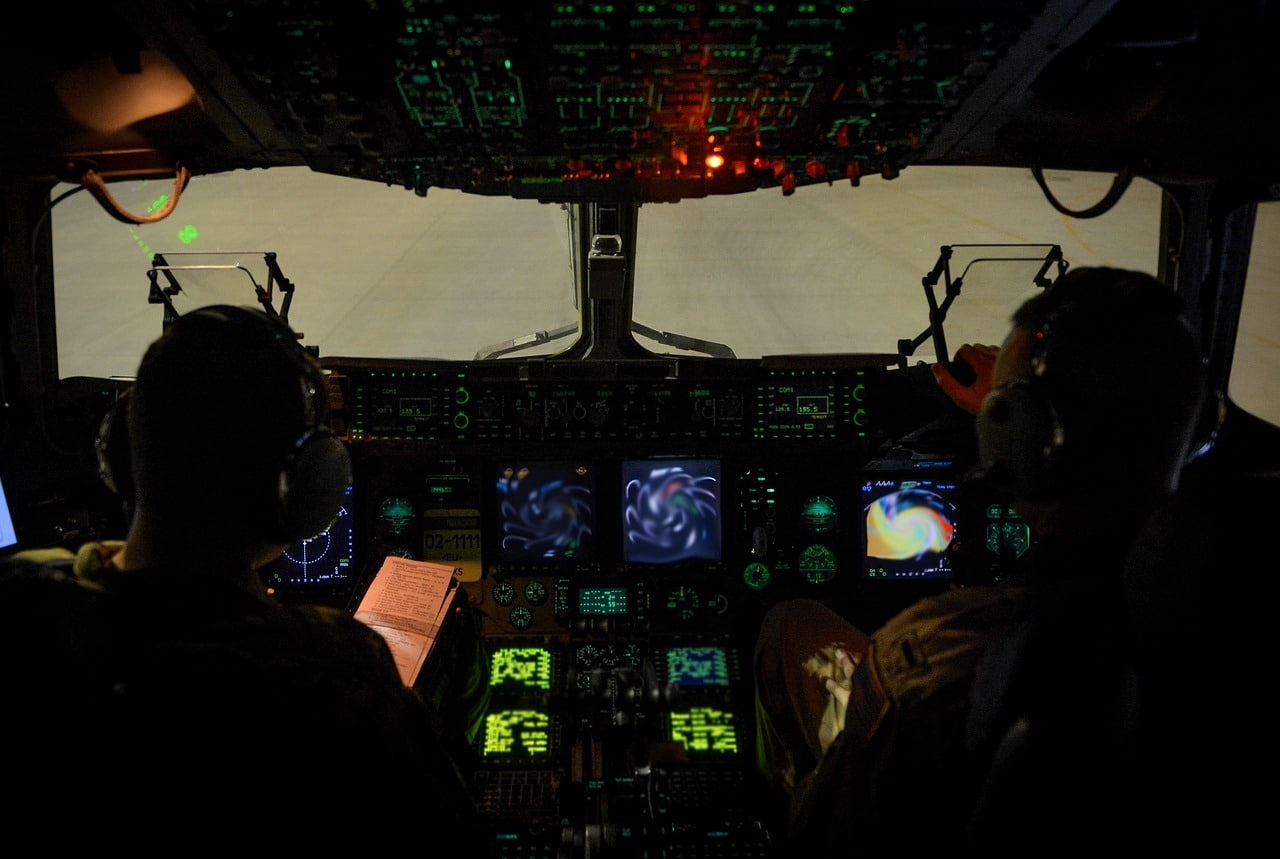Airlines
Airlines Avoid flying over these 10 countries.

There are several countries in the world where airlines may avoid flying over due to safety and security concerns. While this may change depending on current events and circumstances, here are 10 countries that have been known to be avoided by airlines:
1. Crimea – Airlines generally avoid flying over the Crimea region due to political tensions and uncertainty surrounding the status of the region. As a result, the political situation in the region remains unstable, with ongoing disputes over territorial claims and control. Overall, many airlines continue to avoid flying over the area to prioritize the safety of their passengers and crew.
2. Syria – Airlines generally avoid flying over Syria due to the ongoing conflict and political instability in the region. The conflict in Syria began in 2011 and has led to widespread violence, displacement, and a humanitarian crisis. The risk to aviation in Syria is primarily related to the potential for the conflict to spill over into the airspace.
3. North Korea – The lack of cooperation and transparency from North Korean authorities also makes it difficult for airlines to assess the safety of flying over the country. Without accurate and reliable information about air traffic control procedures, airport facilities, and other critical factors, airlines are reluctant to operate flights over North Korea.
4. Afghanistan – Airlines generally avoid flying over Afghanistan due to the ongoing conflict and security concerns in the region. The country has been in a state of war and instability for decades, and the situation on the ground remains volatile with ongoing military operations, terrorist attacks, and other security incidents.
5. Somalia – Due to concerns about the country’s security situation and the lack of adequate air traffic control infrastructure. Somalia has been in a state of civil war and political instability for several decades, and the situation on the ground remains volatile with ongoing military operations, terrorist attacks, and piracy incidents.
6. Yemen – Yemen has limited air traffic control infrastructure and resources, which could lead to increased risks to aviation safety. Without proper air traffic control procedures and equipment, the risk of mid-air collisions or other incidents could be higher. Due to these risks, many airlines have chosen to avoid flying over Yemen altogether.
7. Libya – Due to the ongoing conflict and security concerns in the region. Libya has been in a state of political instability and armed conflict since the fall of the Gaddafi regime in 2011, and the situation on the ground remains volatile.
8. South Sudan – Airlines generally avoid flying over South Sudan due to concerns about the country’s security situation and the lack of adequate air traffic control infrastructure. ICAO has also issued a notice to airmen (NOTAM) advising airlines to avoid airspace over South Sudan. As a result, flights to and from Africa may be diverted to alternative routes to avoid flying over the conflict zone.
9. Ukraine – particularly the Crimean Peninsula and eastern Ukraine. There have been several incidents in the past where anti-aircraft missiles have been used against military and civilian aircraft in eastern Ukraine. There is also a risk of inadvertent clashes between different military forces operating in the region, which could potentially result in a shoot-down of a commercial aircraft.
10. Iraq – ongoing security concerns and the potential for ground-to-air missile attacks in the region. Iraq has been in a state of political instability and armed conflict for many years, and the situation on the ground remains volatile with ongoing military operations, terrorist attacks, and other security incidents. The risk to aviation in Iraq is primarily related to the potential for ground-to-air missile attacks, which pose a serious threat to commercial aircraft flying over the region.

Airlines
A New Player Takes Off: Embraer Poses a Formidable Challenge to Boeing

In the midst of ongoing challenges faced by Boeing and the aviation industry at large, Brazilian aircraft manufacturer Embraer has been thrust into the spotlight.
Recent reports suggesting that Embraer is eyeing the development of a next-generation narrow-body aircraft have sparked intrigue and speculation. However, the company has swiftly moved to quash such rumors.
Internal assessments conducted within Embraer have indeed highlighted the company’s impressive technological prowess and manufacturing capabilities. These findings have led some to speculate about the potential for Embraer to enter the narrow-body aircraft market, traditionally dominated by industry giants Boeing and Airbus.
In light of Boeing’s recent challenges, including the protracted grounding of its 737 MAX jets and leadership upheavals, some industry analysts have suggested that there may be an opportunity for smaller players like Embraer to disrupt the market duopoly. Airbus, too, has plans to introduce a new narrow-body aircraft in the future, further intensifying competition in this space.
However, despite the potential openings created by Boeing’s troubles, Embraer appears cautious about overextending itself. The company is currently focused on maximizing the success of its existing portfolio, which includes the innovative E2 aircraft series.
Additionally, the emergence of alternatives such as China’s Comac C919 adds another layer of complexity to the competitive landscape. While the C919 has thus far secured orders primarily from Asian carriers, Boeing’s challenges could prompt airlines worldwide to explore alternative options.
Airlines
Air India Revised Baggage Rules for Domestic Flights

Air India, one of India’s leading airlines, has implemented significant changes to its baggage policies, affecting travelers across various fare classes.
Effective May 2, 2024, the airline has rolled out a revised baggage allowance scheme, marking a reduction in the permitted weight limits for most fare categories. Under the updated guidelines, passengers booking economy and business class tickets will notice a decrease in their baggage allowance by 5 to 10 kilograms compared to previous allowances.
These adjustments reflect Air India’s response to market dynamics and regulatory requirements. In the Economy Comfort category, encompassing S, T, U, and L fare classes, travelers will now have a baggage allowance of 15 kilograms, down from the previous 20 kilograms. As reported by livefromalounge.
Similarly, passengers availing themselves of Economy Comfort Plus, including G, W, V, Q, and K fare classes, will see their baggage allowance reduced to 15 kilograms from the earlier 25 kilograms.
However, not all fare classes are subject to reductions. Economy Flex passengers, represented by the H, M, B, and Y fare classes, will maintain their previous baggage allowance of 25 kilograms.
In the business class segment, changes are also evident. Business Comfort Plus, consisting of Z and J fare classes, will now offer a baggage allowance of 25 kilograms, down from the prior 35 kilograms. Meanwhile, passengers booking Business Flex tickets under the D and C fare classes will have a revised baggage allowance of 35 kilograms, compared to the previous 40 kilograms.
For passengers planning their upcoming journeys with Air India, it is essential to review the updated baggage policies to ensure compliance and avoid any inconvenience during their travel experience.
Airlines
These are two airlines that placed the largest orders for Comac

China Southern Airlines has made a significant move in the aviation industry by placing a monumental order for 100 Comac C919 aircraft.
Marking a pivotal moment in the commitment of state-owned Chinese airlines to domestically developed planes. The deliveries are set to commence this year and continue until 2031.
The order holds a considerable value of USD 9.9 billion; however, China Southern will benefit from substantial discounts provided by the manufacturer, Commercial Aircraft Corporation of China. This announcement comes closely after Air China’s recent order for 100 C919s, albeit in the Extended Range variant.
China Southern’s decision to invest in the C919 reflects its strategic vision to address capacity demands, achieve fleet balance, and enhance its overall strength and brand image.
By incorporating these advanced aircraft into its operations, the airline aims to alleviate pressure on capacity, optimize its fleet structure, and bolster its competitive position in the market.
As China continues to assert itself in the global aviation industry, the significant orders placed by its state-owned carriers underscore the country’s commitment to domestic aviation manufacturing.
With both China Southern Airlines and Air China making substantial investments in the Comac C919, the stage is set for these domestically developed aircraft to play a pivotal role in shaping the future of Chinese aviation.






















